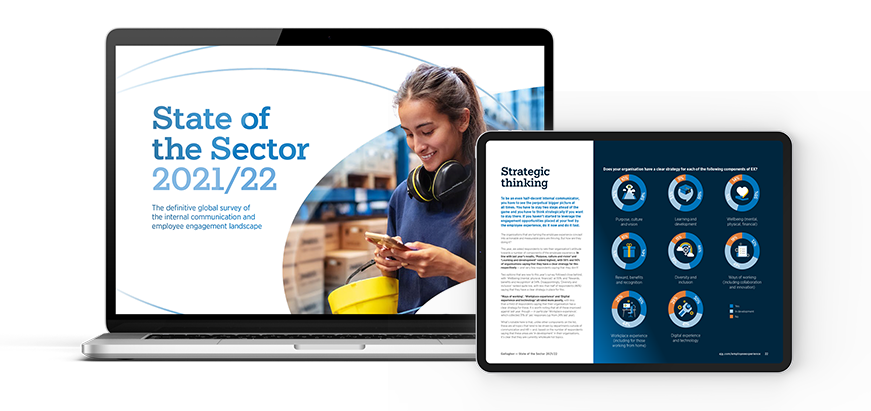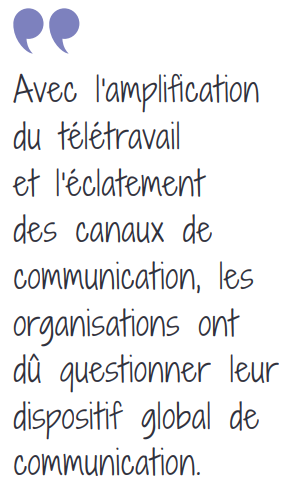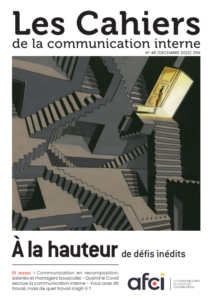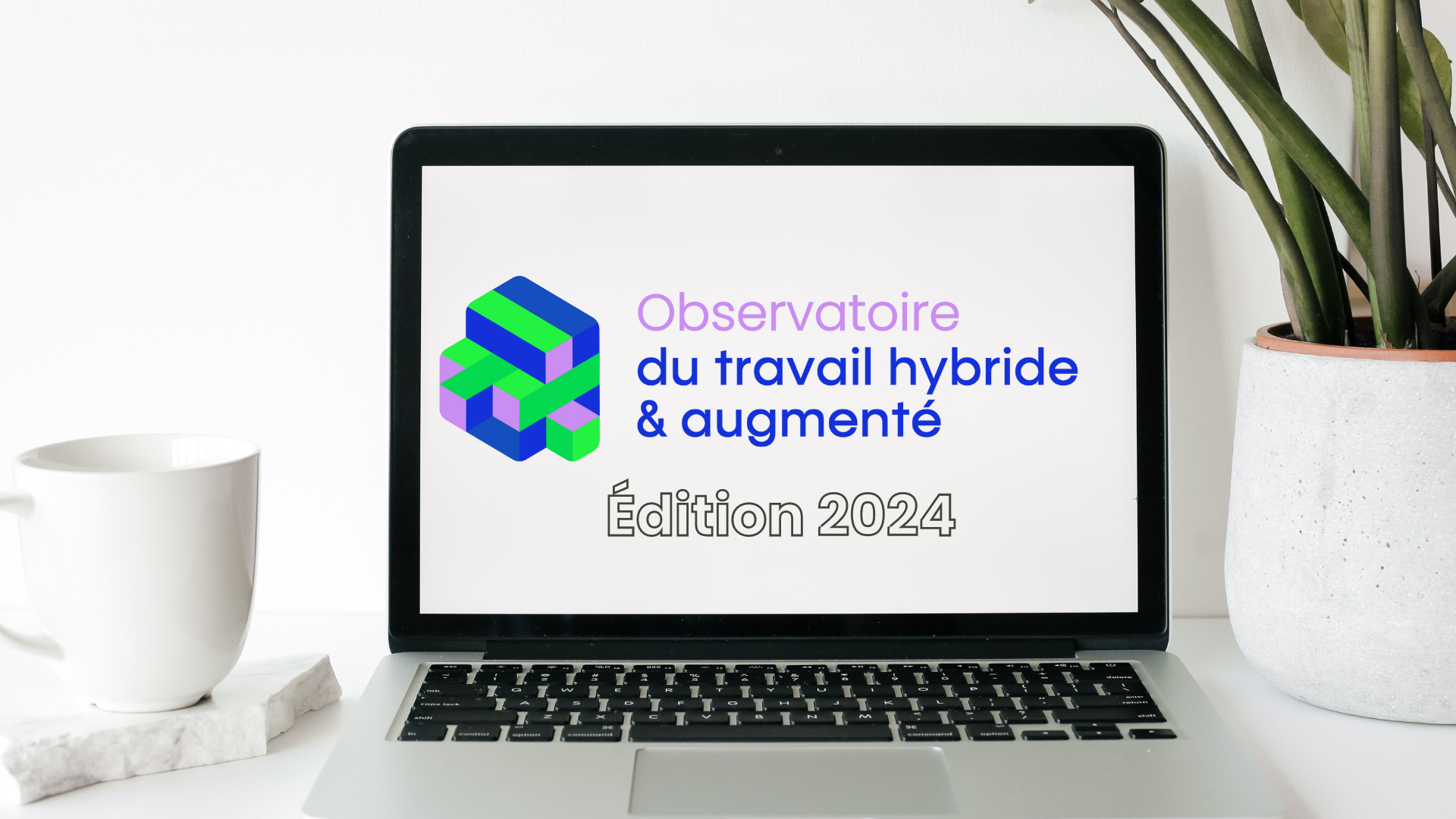COMMUNICATION UNDERGOING MAJOR CHANGE, EMPLOYEES AND MANAGERS SHAKEN UP

21 December 2022

After the pandemic episode, and while the general context has never been so complex and unpredictable, how are organizations and their internal communication departments adapting? What about the "employee experience"? The Gallagher Observatory, which tracks the evolution of internal communication, has been providing instructive insights into the evolution of our businesses for over ten years, on the scale of several continents.
![]()
This article was published in Les Cahiers de communication interne n°48
of the association française de communication interne (AFCI).
TO COMMUNICATE IS TO BRING TOGETHER
The two years under pressure that the activity has just gone through have the merit of having reminded many of its fundamentals. Regardless of the country and the context, the 1,300 professionals who responded to the State of the sector 2021-2022 survey share the same meaning for work: "to mobilize employees around a goal, a strategy and a vision".No wonder "dealing with uncertainty" is their biggest challenge today. The health crisis was a wake-up call.
When the operating methods that usually seal a group are weakened and no longer work, it is essential that information circulates and that links are not broken. In the face of uncertainty, communication departments have (re)activated structuring projects around the collective narrative and the raison d'être, values and vision. The objective is to bring employees together around a common story, where everyone recognizes themselves and finds meaning.
This work of gathering and clarification has enabled the communication department to gain visibility and develop its influence with the management bodies. How did this happen? Precisely by putting the leaders back in the front line, while listening more to the organization, giving a voice to the employees, and having a transparent, embodied and accessible discourse. We can only welcome this return to the essentials of the activity.

RECRUITING, MOTIVATING AND RETAINING EMPLOYEES
The Observatory confirms it: recruiting, motivating and retaining employees has never been more complicated on a global scale. Disengagement, which was already identified in 2020 as the third most important challenge, is now at the top of the podium, just ahead of - it's worth noting - lack of resources, lack of measurement and analysis, and lack of communication skills among managers.
82% of communicators are convinced that internal communication is a key factor in what is known as the "Employee eXperience".
The involvement of the profession is notable. How is it addressing this issue? Here again, the preferred approaches include skills development, diversification of themes and messages, more focused on the recognition of individuals and teams, such as well-being, diversity, new working methods and even the relationship with digital technology.
Respondents also recognize that these issues are of growing interest to senior management, who see this as a way to develop the attractiveness of their company and make their teams a real competitive advantage.
However, only 19% of organizations say they have really invested in a structured approach to this "employee experience", with a clear mandate to drive it.
Faced with this observation, HR and communication managers are opting for a proactive, "baby steps" approach, by setting up dedicated cross-functional teams
HYBRID WORK: RETHINKING INTERACTIONS AND DELIVERY CHANNELS
How do we share knowledge and information today? How to collaborate and innovate in an increasingly digital workplace? How do you make two-way communication attractive?
With the rise of hybrid work and the fragmentation of communication channels, organizations have had to question their overall communication strategy. Their digital maturity has progressed, even if it has been variable.
The good news is that companies that have adapted their communication channels to all their employees have higher levels of attraction and retention of "talent"... Structures with more than 15,000 employees that have deployed more inclusive solutions (mobile applications, shared workstations, display...) for off-line workers, the so-called non-connected employees, such as handlers, field agents, who have neither equipment nor a professional digital identity, seem to have succeeded better than others.
However, in this respect, communication does not seem to have found its model yet. Beyond the obvious communication issues, it is likely that senior management will need more quantitative data to invest in more inclusive communication systems.

MANAGERS ARE BEING SHAKEN UP AND THE ROLE OF COMMUNICATORS IS STILL INSUFFICIENTLY SUPPORTIVE
With the multiplication of digital tools and channels and the overabundance of information, the managerial line has been shaken up in its posture, its methods and its management.
A culture shock, if you are not prepared for it! Do human resources and internal communication managers offer appropriate support so that these managers, who are now hybrids, can best fulfill their missions? Have they even tried to clarify their needs? Have they been approached?
Not really, says Gallagher, and even less in European countries! A matter of culture? Is it a question of recognizing managers in their role?
In any case, depriving managers of dedicated and targeted communication and support deprives human resources and internal communication departments of a powerful lever for relaying sometimes critical information to employees who are historically difficult to reach.
In all cases, managers have high expectations, both in terms of content and ease of access to information. In short, they need a global system that makes their lives easier... and not the opposite! This is not always the case.

SIGNIFICANT OPPORTUNITIES
The Gallagher Observatory confirms the significant opportunities for HR and communications professionals to expand their scope of activities and their weight in the organization.
They need to work hand-in-hand with leaders to set a course for employees, to reassure, mobilize and innovate. They need allies in cross-functional departments, business units, managers and all employees to feed their thinking, build a communication system adapted to everyone and actively contribute to cross-functional issues such as the "employee experience", hybrid management, commitment, social and societal responsibility.
Finally, human resources and communication professionals need to assert their leadership and make their convictions loud and clear. In terms of communication, organizations need, more than ever, to find a balance between the search for efficiency and performance and the quest for meaning, trust and recognition of employees.
This is an exciting future to build collectively, with humanity, high standards and creativity.
🎯 THE GALLAGHER OBSERVATORY: IDENTIFYING AND ANTICIPATING
Since 2008, Gallagher has been studying the evolution of the internal communication and employee engagement landscape. The 2022 report, entitled "State of the Sector
2021/22, is the UK communications agency's most forward-looking report to date, with more responses and more territories covered than usual.
Data from 1,300 HR and communications executives from around the world, across 33 industries, 46% of whom are based in North America and 35% in Europe, was compiled via an online questionnaire and then analyzed.
The results of the study reflect the intensity of the two years the profession has been through. They are dense, rich in lessons learned... and optimistic in the sense that they
encourage action.
More information on Gallagher's State of the Sector 2021/22 study at www.ajg.co




